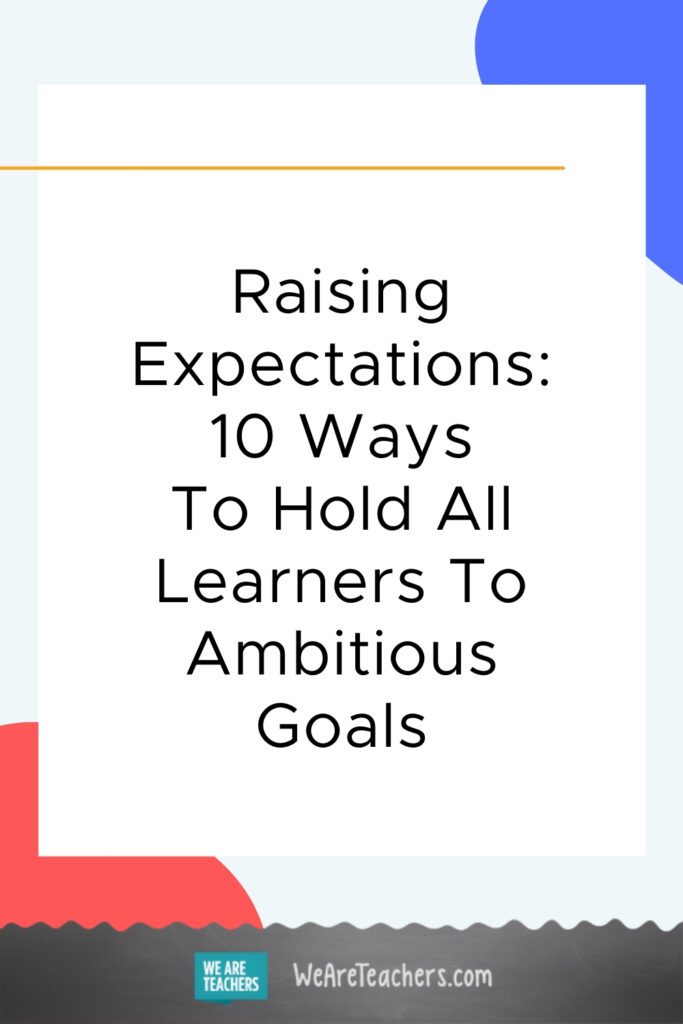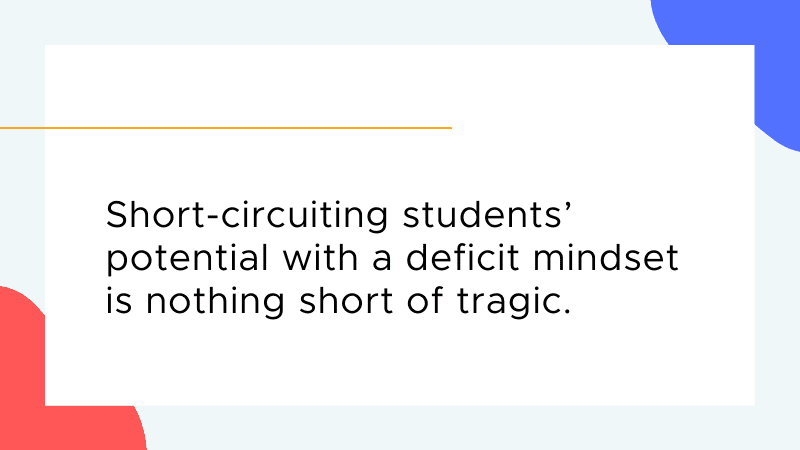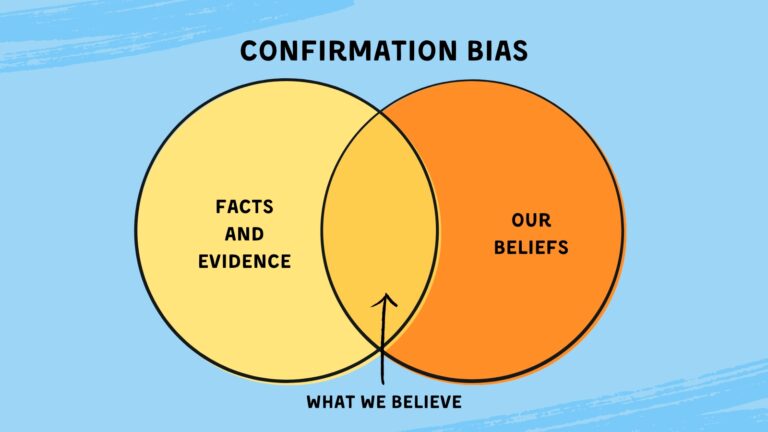I’m continually surprised by the number of times people have remarked, “You really hold these kids to high expectations in your classroom, huh?” As an elementary resource teacher, this kind of comment is precisely what motivates me to keep my standards high─and my expectations higher.
If you think about your role in the classroom, you really hold a lot of power. Power to empower, encourage, and enable; and power to disengage, disable, and defeat. Short-circuiting students’ potential with a deficit mindset is nothing short of tragic. Our students are learners in all senses of the word. They learn about content in our delivery, and they learn about character in how we craft our classrooms. The ways we show students how to construct an argument, honor different perspectives, and engage in meaningful conversations are the most important lessons of all. When we do it with nuance and open minds, our learners grow with open hearts. When we approach education with a narrow mind, students wilt in our low expectations. Here are ten ways I’ve found that help set the bar for all students.
1. Choose your words carefully
Have you ever thought about why decision fatigue and total mental exhaustion are so prevalent among teachers? The number of moment-to-moment decision-making you do in a minute, let alone a day, is endless and arguably one of the most important parts of the job. Every answer, question, and directive has an impact on how your students see themselves and how they believe you see them. So, construct those words thoughtfully. Responses as simple as “I don’t have time for that right now” shifted to “Let me look at that when I can give it the time it deserves” changes the entire tone of the exchange from dismissive to valued.
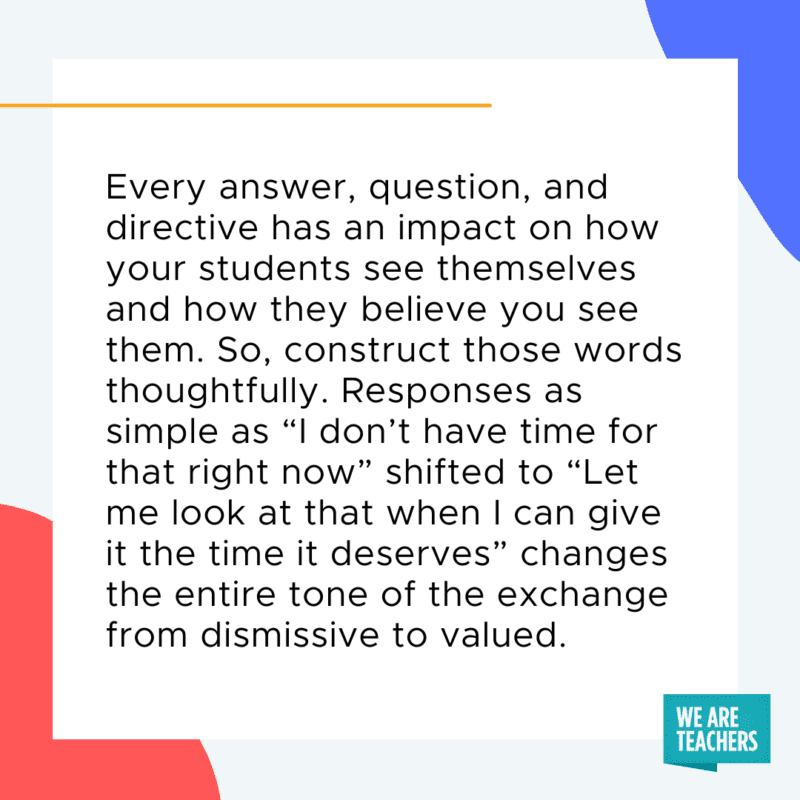
Everyone has that one thing a teacher said to them that they’ll never forget. (I’m sure you’re thinking about that one comment right now. Mine was a high school Spanish teacher asking me if I was dyslexic in front of the entire class because I kept misspelling “temperatura”). Take the time to craft your interactions purposefully. Create moments for students to remember that “one thing a teacher once said to me” when they need it most. This isn’t about delivering blanket praise, but words that reinforce that what each child brings to the classroom is valuable. Use your words to empower and encourage so that children feel the responsibility to bring their best and truest selves each day too.
2. Set the standard that “I can’t” is not an option
I’m sure we’ve all somehow engaged with Carol Dweck’s concept of “the growth mindset.” However, teaching it and embodying it are two completely different things. I can’t tell you the number of times I’ve heard “…but I can’t!” in my classroom (and I’m fairly confident I’m not alone in that, regardless of grade level). Remember when I was talking about teachers holding a lot of power earlier? This is your time to utilize it. Direct students to reframe their language to specifically explain what it is that they don’t understand. This gives you the opportunity to praise their ability to precisely detect what confuses them. Even more importantly, it provides students with the foundation of productive struggle and an opportunity to clarify their own thinking.
3. Consider where students’ mentality comes from
At the risk of overgeneralizing, so many students are filled with defeat. They want to learn and succeed, but they feel like every task in school is simply too much because their confidence has been knocked out of them. Other students see school as a checkbox, and in order to fill it, they do the bare minimum but have no desire to push themselves to their fullest potential. Balancing your role in a classroom with these two categories of kids is the tricky part. Engaging with a student who needs support and modeling versus a student who needs encouragement and purpose behind their work are two different ball games. Whatever the circumstance, finding out why a student engages in your class the way they do will further your ability to set the bar for them accordingly.
Developing and giving student surveys that include questions such as…
- Why do you think school is important (or isn’t)?
- How does school help you in your daily life?
- How do you feel when you’re in school?
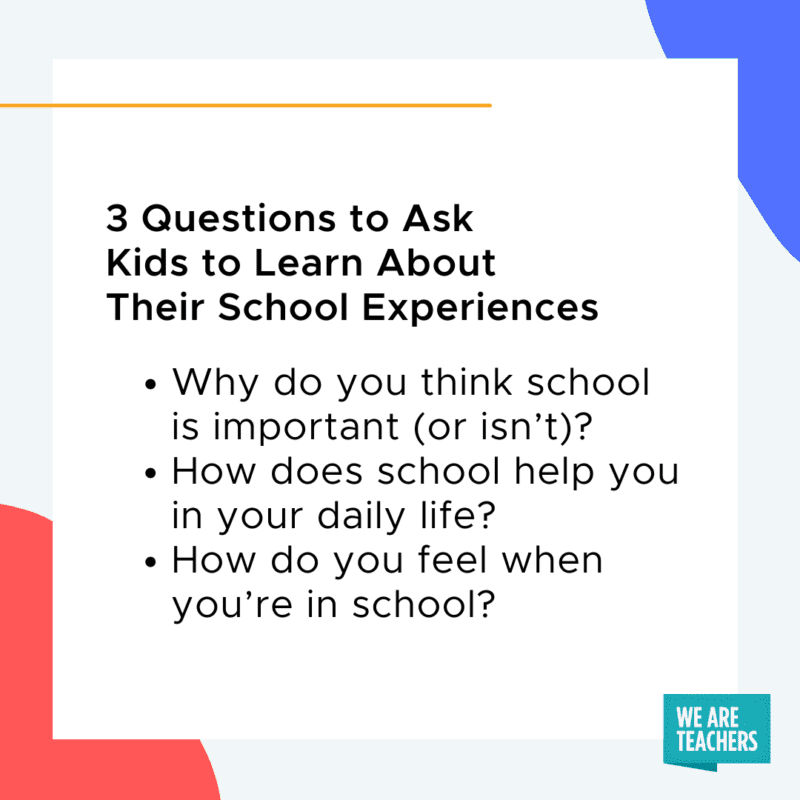
…will reveal a much-coveted understanding behind your students’ mentality in a way that doesn’t feel threatening or invasive.
4. Engage with kids, not content
This one is coming straight from the heart. Don’t get me wrong; content is important (obviously). I’m a huge proponent of aligning my lessons with grade-level standards as much as possible, even though the students I work with have IEPs granted by a diagnosis and standardized testing that identifies them as “behind grade-level.” But, at the end of the day, month, semester, year and so on─it’s the kids you worked with who are going out into the world, not the content. So, setting high expectations for kids will create adults who set high expectations for themselves and those around them. Fostering a passion for achieving more travels far beyond setting expectations for mastery of the content.
5. Remember, you are a mirror
Whether we like it or not, every interaction we have reflects back on our students. The way we speak to our classroom aides; how we treat the custodians when they come into the room; the way we respond to a student with autism having a meltdown; how we speak to a student who just flipped you off—they see all of it. I’ve watched students’ eyes and bodies wholeheartedly tell me they are watching me to see how they should react, and this is a powerful opportunity as an educator. But these moments don’t only come in extremes. It’s all the moments in between that matter—the way you critique another student’s work, the way you answer a student’s question, the way you respond to student behavior, the nonverbal response your face says even when your voice doesn’t. The moment you take to embed potential in one student is seen. Recognize the reflection you cast.
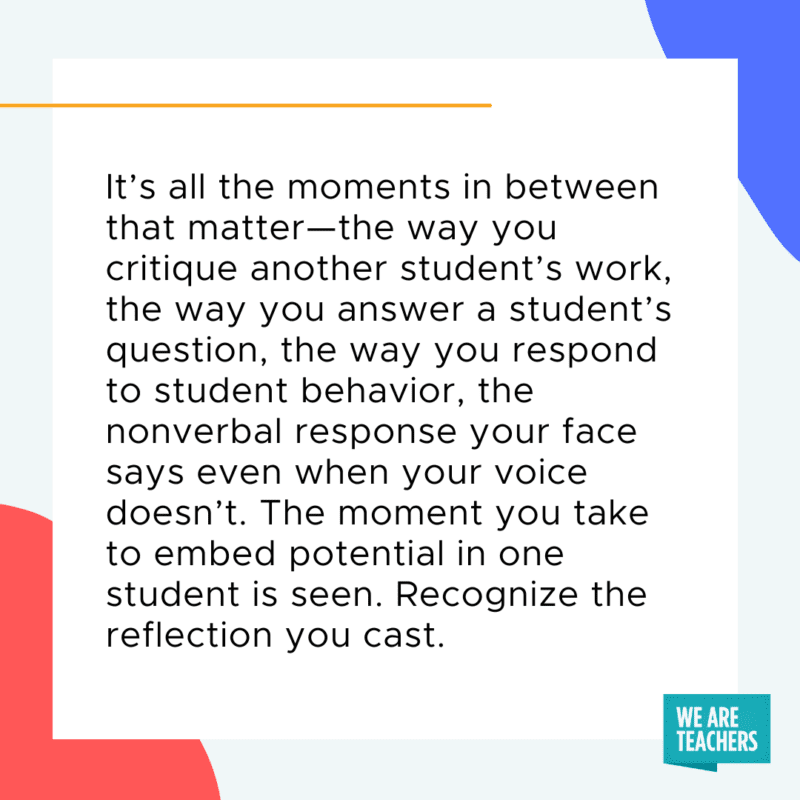
6. Turn up the microphone
This may seem obvious, but exuding enthusiasm in the learning process can go so much further than you think. When you take the time to jump up and down, throw your fists in the air and screech with excitement (and yes, I mean quite literally), children’s insides fill with joy. That feeling can get students through the next “I can’t” cloud that hangs over their head, and even if it does that just once, it was worth it. Your voice can be used to empower theirs, so keep that microphone turned on loud.
7. Let students make mistakes
There’s such an emphasis in education on “getting it right.” Whether it’s teachers teaching the lessons the right way, kids testing to get the right score, administrators saying the right thing─no wonder there’s so much anxiety around school. Just take a moment to think about this: Did you ever perform your best when all you could think about was not making a mistake? Probably, never. Making mistakes is critical. Kids will take more risks when they’re immersed in an environment where mistakes are valued and seen as an opportunity to grow. Create opportunities for students to share this.
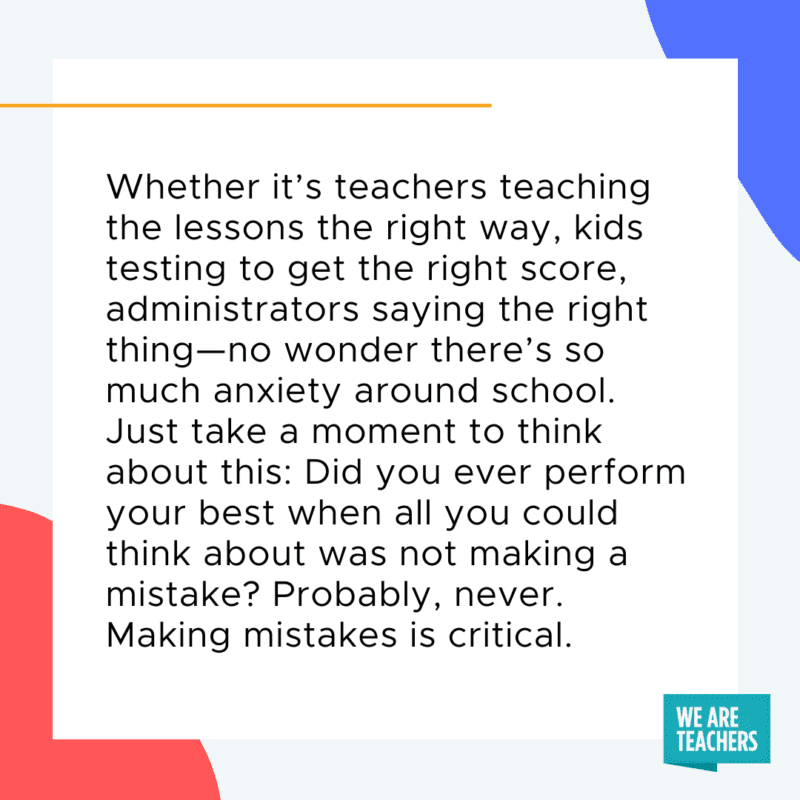
8. Acknowledge the growth process
Learning is all about growth, right? The main focus of your classroom should be on student growth. One of my favorite things to do is show students their work from earlier in a unit or even earlier in a year and help them visually acknowledge the difference between where they started and where they are now. Have students explain what they did to make improvements. Display their work in a “Look Where I Started” and a “Look Where I am Now” bulletin board. Whichever way you choose to celebrate growth, remember to appreciate where students began.
9. Focus on the big picture
It’s so easy to get caught up in the nitty-gritty of every day. Which standard is this covering? How many weeks do we have left in the unit? What’s on the end-of-the-unit assessment that I still haven’t covered? But, if you remind yourself to focus on what’s really at the core of your lessons, your expectations will shift from “at this moment” to “in the long run.” For example, when I fall into a conversation with second graders who ask why they must write more than two sentences because “I already know how to write,” I respond with “because when you grow up and have a job, you need to communicate your ideas through emails and documents which are all comprised of writing”. And, in response to the classic retort from students, “but I don’t even have to use Math if I want to be a [fill in the blank]” instead of a clipped “just do it” response, I’ll take the time to make the point that one day they will need to know how to pay bills or “see if you can really afford that Lamborghini you’ve been dreaming about since elementary school.”
The examples go on and on, but I encourage you to consider what’s really the core takeaway of what you’re teaching. Sometimes it might simply be learning to work through something that’s difficult or learning to immerse yourself in a topic that’s uncomfortable. Take the elementary unit on knowing how to read a fairy tale, for example. Maybe its core purpose is to teach imagination, or to help develop creativity, but I can assure you it’s not so that an adult remembers having read The Three Little Pigs.
10. Manifest potential
You have the opportunity every single day to get a little mind to believe in itself. Use this power to create a self-trust in students─a faith that there will be change, there will be growth and there is endless potential. Set the standard for yourself, that if you can do just that for your kids, your potential is endless too.
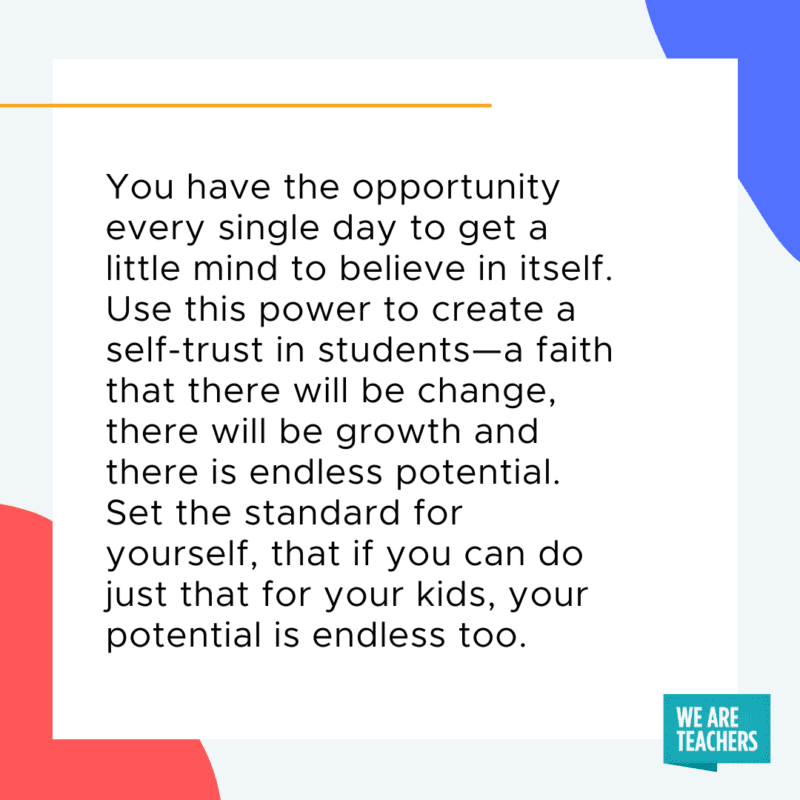
How do you hold students to high expectations in the classroom? Share in the comments!
Plus, for more articles like this, be sure to subscribe to our newsletters.
